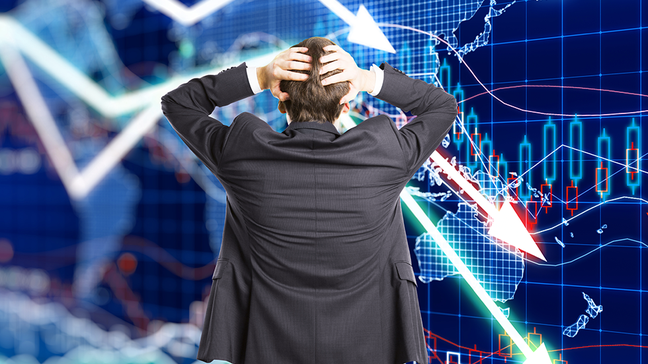How to Trade the Stock Market Panic and Fears
Stock market panic usually depicts the most frightening time for economics as well as investors. On the other hand, experts recommend trading fears rather than having them. If we go back in time to the year 2020, we can remember those tough times with the news of the pandemics bursting out and resulting in severe market shocks. Most traders were scared like babies hearing a clap of thunder during the storm.

However, market panic does not always mean market shocks. It is also a signal for some traders to take action. In this article, we will try to figure out how to trade fears and benefit from even bigger gaining potential.
What Experts Say about Stock Market Panic
According to Warren Buffet's strategy, an experienced trader is supposed to feel fear when others are greedy and vice versa, one should be greedy when other traders are fearful. So, when the world is announced to meet the new wave of the COVID-19 with people buying masks around the globe, it is also the time to sit down and think of what the situation might mean from a trading perspective.
While only doctors can advise one on health issues, financial experts say that accessing the panic impact and having a deeper market overview can definitely bring some profit. Here are some baseline steps to take in the situation with the market panic.
#1 – Have No Fear
First of all, you need to calm down and set aside your basic instincts and fear in particular. Making decisions on an impulse will inevitably lead to failure. While the market and people are driven by emotions, keeping calm while the rest of the world keeps going mad is the key to success.
up to 200%

from 0 pips

Trading platform

For example: when the situation goes worse, traders start selling off with fear. If you are coldblooded enough to stay rational and wait for “strong money” to enter the market and take the price higher, it will bring significant profit.
The situation with Brexit is a good example to support the idea above with S&P making its biggest 1-day loss in just a few months. Scared investors started selling off immediately. However, the price started growing significantly reaching its highest highs and keeping rational investors on the winning side.
#2 – Explore the Logic of Fear
According to the latest behavioral research, people tend to take some risks too close and overestimate them when the situation becomes too frightening. For example, when the SARS broke out back in 2002, 23% of people were scared of being infected ignoring the stats that left them a few chances to get sick.
In other words, even though the visors could affect a small number of people, they were still scared. That fear found immediate reflection in the global economy and the stock market in particular. Imagine, you are in the same situation. As a smart and disciplined trader, you are supposed to consider the following aspects:
- A real moment as the start of the pandemic.
- Historical data and previous examples can be used as real-life lessons.
- Upcoming news.
Depending on the pandemic development, the market will be either dominated by aversion or come with lower risks promising traders to retain control over the market.
#3 – Focus on Cycles
Remember that all financial markets follow specific cycles during their movement. The same thing has already taken place before. The energy crisis during the 1970s, the Great Depression, the Black Monday, and many other frightening situations have already happened earlier alongside geopolitical and natural disasters, wars, and so on.
Historical lessons show that financial markets know how to recover and all traders can do is to adjust their strategies responsively and set emotions aside. The scenery may change drastically, but humans are always the same.
You should consider stock market panic as a new horizon with even more trading opportunities. All you need is to be 100% sure when it is the best time to go long or short. Never forget that dangerous things always look bigger than they really are.
This material does not contain and should not be construed as containing investment advice, investment recommendations, an offer of or solicitation for any transactions in financial instruments. Before making any investment decisions, you should seek advice from independent financial advisors to ensure you understand the risks.
